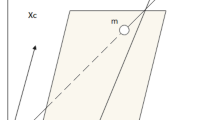Abstract
Water is one of the essential elements in human life, and the water-distribution system is an important infrastructure that distributes water to the people. The design of the water-distribution system was done manually in the past, but recently, it was conducted by applying optimization algorithms. Various optimization algorithms were developed for the optimal design of the water-distribution system, but there was a disadvantage to perform sensitivity analysis for parameter estimation manually. A vision-correction algorithm (VCA) was developed to emulate the conventional manual vision-correction procedure, and it exhibited a good performance in many mathematical benchmark and civil engineering problems. However, the VCA has limited usefulness because of its large number of parameters, many of which require estimation. In this study, a self-adaptive VCA (SAVCA) was developed to overcome these shortcomings by modifying the parameters of the VCA to be self-adaptive or fixed. The Balerma network — a water-distribution system — was selected as a civil engineering problem. The results of SAVCA were better than those of other methods for the design of Balerma network. The SAVCA exhibited good usability and performance and can be applied to various fields in civil engineering including the water-distribution system.
Similar content being viewed by others
References
Chen WN, Jia YH, Zhao F, Luo XN, Jia XD, Zhang J (2019) A cooperative co-evolutionary approach to large-scale multisource water distribution network optimization. IEEE Transactions on Evolutionary Computation 23(5):842–857, DOI: https://doi.org/10.1109/TEVC.2019.2893447
Cisty M, Bajtek Z, Celar L (2017a) A two-stage evolutionary optimization approach for an irrigation system design. Journal of Hydroinformatics 19 (1):115–122, DOI: https://doi.org/10.2166/hydro.2016.032
Cisty M, Bajtek Z, Celar L, Soldanova V (2017b) New methods versus the smart application of existing tools in the design of water distribution network. Proceedings from the 19th EGU general assembly, April 23–28, Vienna, Austria, 6985
Deb K, Beyer HG (2001) Self-adaptive genetic algorithms with simulated binary crossover. Evolutionary Computation 9(2):197–221, DOI: https://doi.org/10.1162/106365601750190406
Geem ZW, Kim JH, Loganathan GV (2001) A new heuristic optimization algorithm: Harmony search. Simulation 76(2):60–68, DOI: https://doi.org/10.1177/003754970107600201
Goldberg DE, Holland JH (1988) Genetic algorithms and machine learning. Machine Learning 3(2):95–99, DOI: https://doi.org/10.1023/A:1022602019183
Ismail A, Engelbrecht AP (2012) Self-adaptive particle swarm optimization. In: Asia-Pacific conference on simulated evolution and learning. Springer, Berlin, Heidelberg, Germany, 228–237
Jia YH, Mei Y, Zhang M (2020) A memetic level-based learning swarm optimizer for large-scale water distribution network optimization. Proceedings of the 2020 genetic and evolutionary computation conference, association for computing machinery, July 8–12, Cancún, Mexico, 1107–1115, DOI: https://doi.org/10.1145/3377930.3389828
Jia J, Schaub MT, Segarra S, Benson AR (2019) Graph-based semi-supervised & active learning for edge flows. Proceedings of the 25th ACM SIGKDD international conference on knowledge discovery & data mining, July 25, Anchorage, AK, USA, 761–771, DOI: https://doi.org/10.1145/3292500.3330872
Johns MB, Mahmoud HA, Keedwell EC, Savic DA (2020) Adaptive augmented evolutionary intelligence for the design of water distribution networks. Proceedings of the 2020 genetic and evolutionary computation conference, association for computing machinery, July 8–12, Cancún, Mexico, 1116–1124, DOI: https://doi.org/10.1145/3377930.3390204
Jung D, Kim JH (2018) Many-objective optimal meter placement for pipe burst detection. In: WDSA/CCWI Joint Conference Proceedings (Vol. 1), July 23–25, Kingston, Canada
Jung D, Lee S, Hwang H (2019) Optimization difficulty indicator and testing framework for water distribution network complexity. Water 11(10):2132, DOI: https://doi.org/10.3390/w11102132
Kim JH, Lee HM, Jung D, Sadollah A (2017) Engineering benchmark generation and performance measurement of evolutionary algorithms. In: 2017 IEEE congress on evolutionary computation (CEC), San Sebastian, Spain, 714–717, DOI: https://doi.org/10.1109/CEC.2017.7969380
Lee HM, Jung D, Sadollah A, Yoo DG, Kim JH (2019) Generation of benchmark problems for optimal design of water distribution systems. Water 11(8):1637, DOI: https://doi.org/10.3390/w11081637
Lee EH, Lee HM, Kim JH (2018a) Development and application of advanced muskingum flood routing model considering continuous flow. Water 10(6):760, DOI: https://doi.org/10.3390/w10060760
Lee EH, Lee HM, Yoo DG, Kim JH (2018b) Application of a metaheuristic optimization algorithm motivated by a vision correction procedure for civil engineering problems. KSCE Journal of Civil Engineering 22(7):2623–2636, DOI: https://doi.org/10.1007/s12205-017-0021-3
Mahdavi M, Fesanghary M, Damangir E (2007) An improved harmony search algorithm for solving optimization problems. Applied Mathematics and Computation 188(2):1567–1579, DOI: https://doi.org/10.1016/j.amc.2006.11.033
Omran MG, Salman A, Engelbrecht AP (2005) Self-adaptive differential evolution. In: International conference on computational and information science. Springer, Berlin, Heidelberg, Germany, 192–199
Sadollah A, Bahreininejad A, Eskandar H, Hamdi M (2013) Mine blast algorithm: A new population based algorithm for solving constrained engineering optimization problems. Applied Soft Computing 13(5):2592–2612, DOI: https://doi.org/10.1016/j.asoc.2012.11.026
Tanyimboh TT, Seyoum AG (2020) Design optimization of water distribution networks: Real-world case study with penalty-free multi-objective genetic algorithm using pressure-driven simulation. Water SA 46(3):465–475, DOI: https://doi.org/10.17159/wsa/2020.v46.i3.8657
Taylor DD, Slocum AH, Whittle AJ (2019) Demand satisfaction as a framework for understanding intermittent water supply systems. Water Resources Research 55(7):5217–5237, DOI: https://doi.org/10.1029/2018WR024124
US EPA (2000) EPANET 2.0 user’s manual. U.S. Environmental Protection Agency (US EPA), Washington DC, USA
Acknowledgments
This work was supported by a grant from The National Research Foundation (NRF) of the Korean government (NRF-2019R1I1A3A01059929).
Author information
Authors and Affiliations
Corresponding author
Rights and permissions
About this article
Cite this article
Lee, E.H. Application of Self-adaptive Vision-Correction Algorithm for Water-Distribution Problem. KSCE J Civ Eng 25, 1106–1115 (2021). https://doi.org/10.1007/s12205-021-2330-9
Received:
Revised:
Accepted:
Published:
Issue Date:
DOI: https://doi.org/10.1007/s12205-021-2330-9




